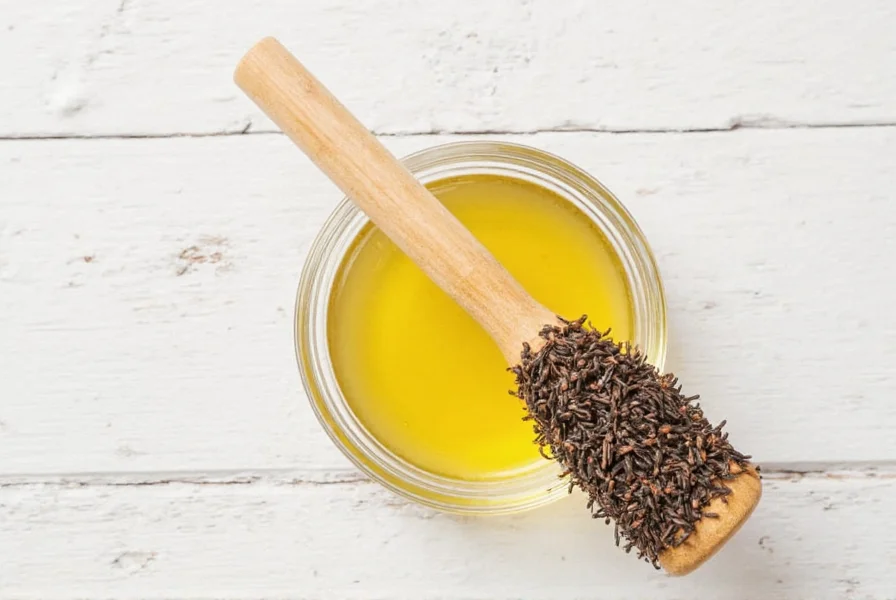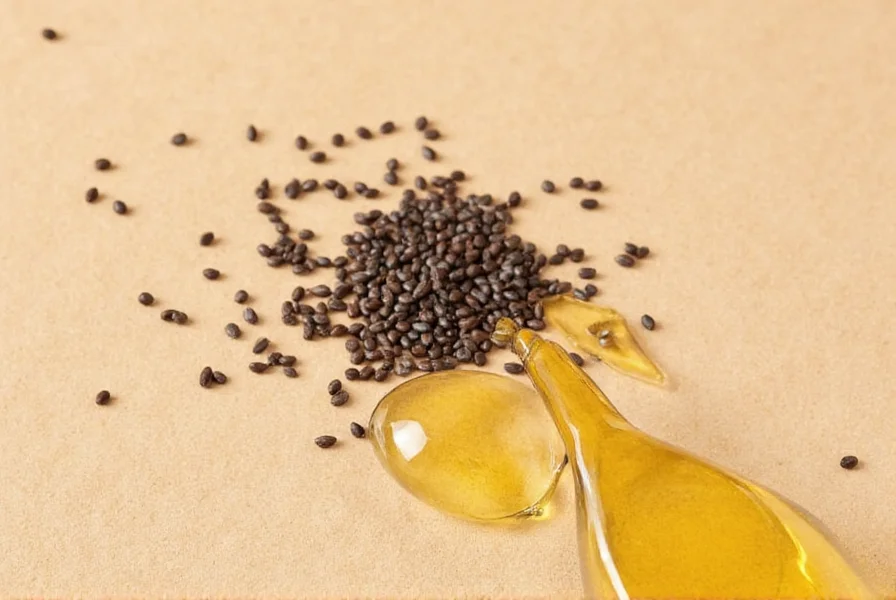Black cumin seed oil, derived from Nigella sativa seeds, has been used for centuries in traditional medicine. Understanding proper consumption methods ensures you receive maximum benefits while minimizing potential risks. This guide provides evidence-based recommendations for safely incorporating black cumin seed oil into your wellness routine.
Recommended Dosage Guidelines
Scientific research provides valuable insights into effective dosing. Clinical trials have tested various amounts, helping establish safe and beneficial ranges for different health goals.
| Purpose | Recommended Dosage | Duration in Studies |
|---|---|---|
| General wellness | 500mg-1g daily | 8-12 weeks |
| Immune support | 1-2g daily | 4-8 weeks |
| Inflammation management | 2-3g daily | 6-12 weeks |
| Skin health (topical) | Diluted 1:1 with carrier oil | 4-8 weeks |
These dosage recommendations come from peer-reviewed clinical studies examining black cumin seed oil's effects. The appropriate amount varies based on your specific health goals and individual tolerance. Research published in the Journal of Ethnopharmacology indicates that doses up to 3 grams daily are generally well-tolerated for most adults.
Optimal Timing for Consumption
When you take black cumin seed oil significantly impacts its effectiveness. The timing question—whether to take black cumin seed oil with food or empty stomach—has important implications for absorption and tolerance.
Scientific evidence consistently shows that consuming black cumin seed oil with meals improves absorption of its active compounds, particularly thymoquinone. A study in the European Journal of Drug Metabolism and Pharmacokinetics demonstrated 30-40% higher bioavailability when taken with food compared to on an empty stomach.
For those with sensitive digestive systems, taking black cumin seed oil with food substantially reduces the risk of stomach upset, nausea, or heartburn. The fat content in meals helps emulsify the oil, making it gentler on your digestive tract while enhancing nutrient absorption.
Effective Consumption Methods
Understanding how to consume black cumin seed oil properly ensures you maximize its potential benefits. Several evidence-based methods work effectively:
Mixing with Carrier Substances
Many people find the strong, peppery flavor challenging. Mixing with honey creates a more palatable combination while potentially enhancing absorption. The traditional Middle Eastern practice of mixing one teaspoon of black cumin seed oil with one teaspoon of raw honey provides both immediate consumption benefits and potential synergistic effects.
Alternatively, mixing with warm water or herbal tea makes consumption easier. Adding lemon juice can help mask the flavor while providing additional vitamin C, which may enhance the antioxidant effects of the oil's compounds.
Capsule Form Considerations
For those who dislike the taste, high-quality capsules offer a convenient alternative. When selecting capsules, look for products standardized to contain 0.5-1.5% thymoquinone, the primary active compound. Enteric-coated capsules may provide better absorption by protecting the oil from stomach acid.
When using capsules, take them with a full glass of water and a small snack to optimize absorption. The proper dosage of black cumin seed oil in capsule form typically requires 1-2 capsules twice daily to reach the recommended 1-2 gram daily intake.
Gradual Introduction Protocol
For beginners wondering how to take black cumin seed oil safely, a gradual introduction is crucial. Start with just 1/4 to 1/2 teaspoon daily for the first 3-5 days. If well-tolerated, increase to 1 teaspoon daily for the next week. After 10-14 days, you can gradually move to the full recommended dose of 1-2 teaspoons daily.
This approach allows your body to adjust and helps identify any potential sensitivities. Monitoring your body's response during this introductory phase represents one of the most important aspects of how to consume black cumin seed oil safely.
Safety Considerations and Contraindications
While generally safe for most adults, black cumin seed oil requires certain precautions. Understanding these safety considerations helps prevent adverse effects.
Potential Side Effects
Most side effects are mild and digestive in nature, particularly when starting treatment. Common reactions include:
- Mild stomach upset or nausea (especially on empty stomach)
- Heartburn in sensitive individuals
- Rare cases of skin rash with topical application
- Temporary changes in bowel habits
These effects typically subside within a few days as your body adjusts. If symptoms persist beyond 7-10 days, discontinue use and consult a healthcare provider.
Who Should Avoid Black Cumin Seed Oil
Certain populations should exercise caution or avoid black cumin seed oil altogether:
- Pregnant women: May stimulate uterine contractions
- Nursing mothers: Insufficient safety data for infants
- Individuals with bleeding disorders: May increase bleeding risk
- Those scheduled for surgery: Discontinue at least 2 weeks prior
- People with low blood pressure: May cause excessive lowering
Medication Interactions
Black cumin seed oil may interact with several common medications:
- Antihypertensive drugs: May enhance blood pressure lowering effects
- Diabetes medications: May increase blood sugar lowering effects
- Immunosuppressants: May interfere with medication effectiveness
- Anticoagulants: May increase bleeding risk
If you take any prescription medications, consult your healthcare provider before using black cumin seed oil. This precaution represents a critical component of how to take black cumin seed oil safely while managing existing health conditions.
Quality Selection Guidelines
The effectiveness of your black cumin seed oil regimen depends significantly on product quality. When selecting a product, consider these evidence-based quality markers:
- Cold-pressed extraction: Preserves heat-sensitive compounds
- Dark glass packaging: Protects from light degradation
- Thymoquinone content: Look for 0.5-1.5% minimum
- Organic certification: Reduces pesticide exposure
- Origin transparency: Egyptian or Mediterranean sources often highest quality
Store your oil in a cool, dark place after opening, and use within 6 months for maximum potency. Proper storage maintains the therapeutic properties essential for effective consumption.

Duration of Use Recommendations
Understanding how long to take black cumin seed oil depends on your specific health goals. For general wellness support, many experts recommend cycling usage—8-12 weeks of daily use followed by a 2-4 week break.
For addressing specific health concerns, clinical studies typically show benefits emerging after 4-8 weeks of consistent use. However, long-term safety data beyond 6 months of continuous use remains limited, supporting the cycling approach for ongoing wellness regimens.
Regularly assess your body's response and consult with a healthcare provider to determine the optimal duration for your individual needs. This personalized approach represents a key aspect of how to take black cumin seed oil effectively for sustained benefits.

Frequently Asked Questions
Can I take black cumin seed oil on an empty stomach?
While possible, taking black cumin seed oil on an empty stomach isn't recommended for most people. Research shows it may cause digestive discomfort and reduces absorption of active compounds. For optimal results and minimal side effects, always take it with food. Those with sensitive stomachs should particularly avoid empty stomach consumption.
What's the best time of day to take black cumin seed oil?
The optimal timing depends on your goals. For general wellness, taking it with your largest meal provides best absorption. For immune support, morning consumption with breakfast may be beneficial. Some traditional practices recommend taking it before breakfast and dinner. Consistency matters more than exact timing—choose times you can maintain daily.
How long does it take to see results from black cumin seed oil?
Most people notice subtle changes within 2-4 weeks of consistent daily use. Significant benefits for specific conditions typically emerge after 6-8 weeks, as shown in clinical studies. Skin improvements may take 4-12 weeks. Individual responses vary based on health status, dosage, and product quality. Patience and consistent use are essential for experiencing the full benefits.
Can I mix black cumin seed oil with other supplements?
Yes, black cumin seed oil generally combines well with many supplements, particularly omega-3 fatty acids, vitamin D, and probiotics. However, consult your healthcare provider before combining with blood thinners, diabetes medications, or immunosuppressants. Some combinations may enhance effects, requiring dosage adjustments. Always introduce one new supplement at a time to monitor your body's response.
Is there a difference between black seed oil and black cumin seed oil?
No, black seed oil and black cumin seed oil refer to the same product derived from Nigella sativa seeds. The terms are used interchangeably, though 'black seed oil' is becoming more common commercially. Both names describe the same oil with identical properties and benefits. When purchasing, check the Latin name (Nigella sativa) to ensure you're getting the authentic product rather than other 'black' seeds.











 浙公网安备
33010002000092号
浙公网安备
33010002000092号 浙B2-20120091-4
浙B2-20120091-4